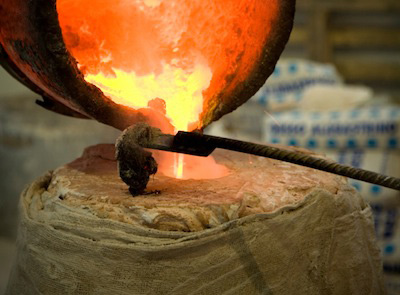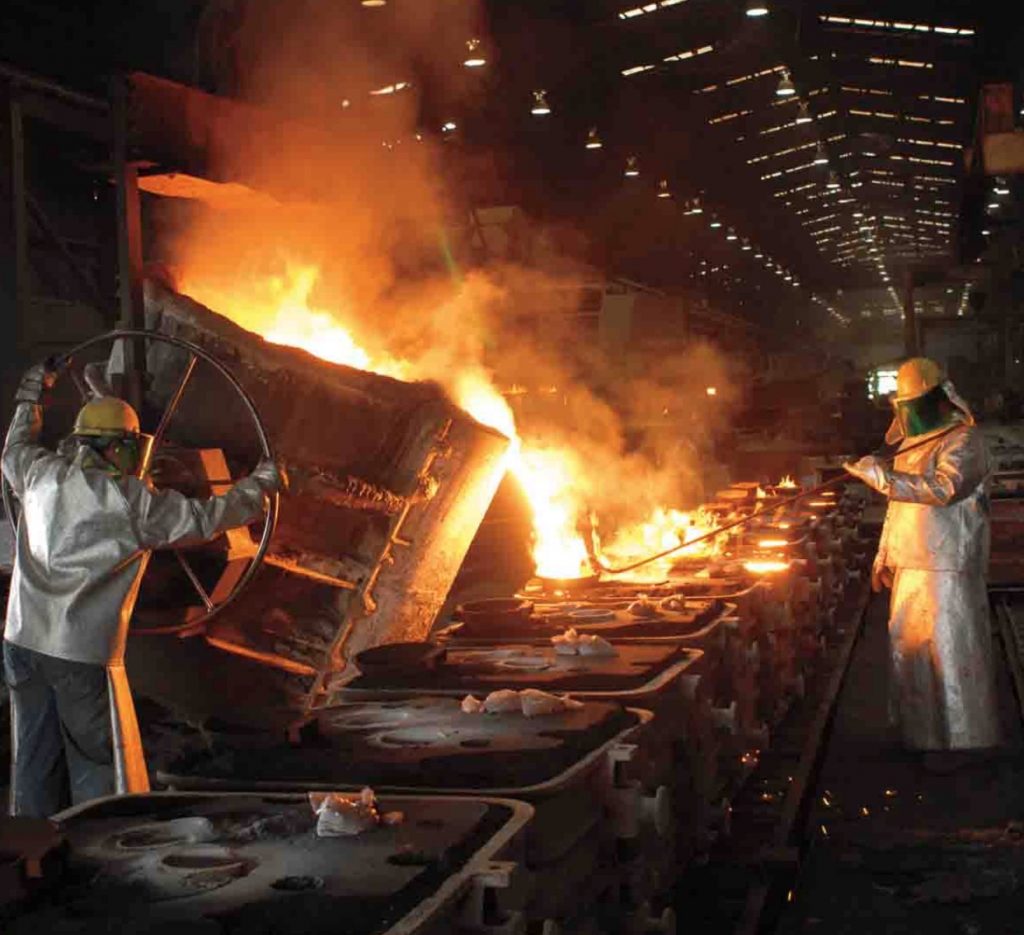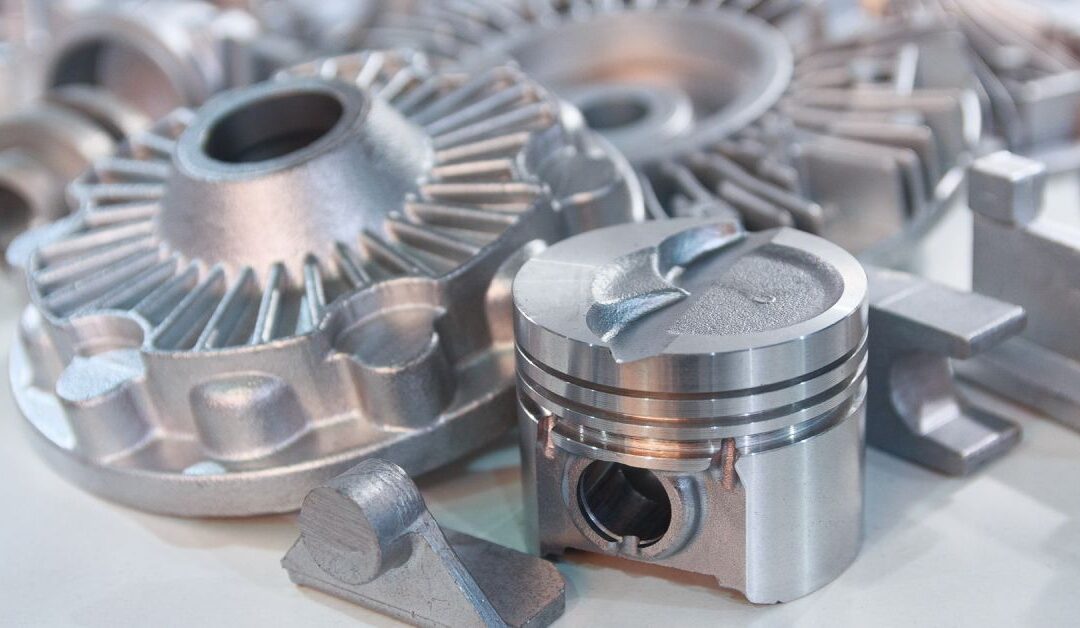Comprehending the Steel Castings Process: A Comprehensive Overview for Beginners
The Metal Casting procedure is a fundamental technique in manufacturing that changes molten metal right into solid forms. Beginners must understand the different methods entailed, such as sand spreading and die casting. Understanding the products, design concepts, and precaution is just as essential. Each facet plays a crucial role in achieving successful end results. As one navigates these details, the inquiry of exactly how to optimize each step for boosted outcomes ends up being increasingly relevant.
The Fundamentals of Metal Casting
Metal Casting has progressed over centuries, its basic principles continue to be regular and integral to the production procedure. At its core, Metal Casting involves the improvement of liquified steel right into solid things with numerous techniques. The procedure starts with the creation of a mold and mildew, which specifies the form of the final product. As soon as the mold is prepared, steel is warmed to its melting factor and poured right into the dental caries. After cooling down, the metal strengthens, taking the form of the mold and mildew.
There are a number of casting approaches, consisting of sand spreading, financial investment spreading, and pass away casting, each with special benefits and applications. The option of method relies on variables such as production quantity, product kind, and wanted precision. Once cast, the final product may undergo additional processes like machining or surface treatment to achieve the required finish and requirements. Comprehending these fundamentals is necessary for anyone interested in the field of Metal Casting.

Understanding Products Used in Steel Casting
Products play an important duty in the Metal Casting process, affecting the final product's residential or commercial properties and efficiency. Various metals are made use of, consisting of aluminum, bronze, iron, and steel, each offering unique qualities suited for details applications. Aluminum is corrosion-resistant and lightweight, making it excellent for automotive parts. Iron, especially cast iron, is favored for its outstanding wear resistance and toughness. Steel provides high strength and adaptability, usually made use of in hefty machinery components. Bronze, known for its corrosion resistance and machinability, is typically employed in marine applications.
Along with the steels, numerous casting products, such as sand, plaster, and ceramic, are utilized to develop mold and mildews. Sand spreading, one of the most prevalent method, utilizes silica sand due to its thermal stability and ability to develop complex forms. Plaster and ceramic molds offer better information however might require even more complex processes. The choice of products directly impacts the effectiveness, price, and top quality of the spreading operation.
The Design Process: From Concept to Blueprint
The layout procedure in Metal Casting starts with the preliminary concept growth, where ideas are generated and evaluated. This is adhered to by the application of CAD modeling methods, permitting accurate visualizations of the style. Ultimately, the plan finalization actions assure that all specs are properly recorded for manufacturing.
Preliminary Concept Growth
First principle advancement notes a crucial phase in the Metal Casting process, where ideas change into substantial styles. During this stage, designers work together with engineers and stakeholders to brainstorm and fine-tune first concepts. They take into consideration variables such as performance, appearances, and manufacturability, guaranteeing that the design satisfies the needed specifications and performance standards. Illustrations and rough drafts are developed to imagine the ideas, allowing for preliminary evaluations of usefulness and cost-effectiveness. This stage likewise includes recognizing materials and potential spreading approaches that align with the design goals. Eventually, first idea growth prepares for a thorough blueprint, leading the subsequent stages of the casting procedure and ensuring an effective change from principle to truth.
CAD Modeling Techniques
Transforming principles into specific layouts, CAD modeling techniques play an essential duty in the Metal Casting process. These strategies use advanced software application to produce thorough three-dimensional versions that precisely mirror the desired product. By utilizing devices such as parametric modeling, strong modeling, and surface area modeling, developers can control dimensions and shapes easily. CAD systems also help with simulation and analysis, permitting the recognition of possible problems before production begins. This proactive method lowers material waste and optimizes the style for manufacturability. Furthermore, CAD models can be conveniently changed, making it possible for fast versions based upon comments. Basically, CAD modeling acts as the foundation of the style procedure, connecting the void in between first concepts and the ultimate production-ready designs.
Plan Completion Steps
Adhering to the production of comprehensive CAD models, the following phase includes blueprint finalization, which is important in equating digital designs right into actionable prepare for manufacturing. This procedure begins with evaluating the CAD models for precision and compliance with specifications. As soon as confirmed, the dimensions, weblink tolerances, and material specifications are carefully outlined to ensure clarity. Integrating comments and notes helps connect crucial details concerning spreading processes, surface finishes, and assembly demands. The finalized blueprint undertakes an extensive approval procedure, usually including collaboration with engineers and manufacturing teams to deal with any prospective concerns. Nevertheless modifications are made and approvals acquired, the blueprint is formally launched, working as the foundational record for the subsequent stages of Metal Casting, consisting of pattern making and mold style.
The Steel Casting Strategies Discussed

Metal Casting techniques include a range of techniques used to form molten metal right into preferred kinds. These methods vary according to the kind of product, intricacy of the design, and production volume. Sand spreading is among one of the most typical techniques, involving the production of a mold from sand to hold the liquified steel. Investment casting, or lost-wax spreading, enables intricate designs by making use of a wax pattern that is thawed away. Pass away casting uses high-pressure shot of liquified steel right into a mold and mildew, suitable for automation. Other methods include long-term mold casting, which uses recyclable mold and mildews, and centrifugal casting, where rotational pressures assist in filling up the mold and mildew. Each technique has its applications and advantages, making it important for manufacturers to choose the suitable approach based on their details needs and demands. Understanding these techniques is crucial for any person entailed in the Metal Casting procedure.
Finishing Processes: Enhancing Your Casted Item

Completing processes play a vital function in boosting the top quality and look of casted items. Different surface area treatment methods, such as polishing and coating, are used to boost longevity and aesthetics. Additionally, top quality examination methods assure that the end product meets defined criteria and efficiency needs.
Surface Area Therapy Methods
A selection of surface treatment methods play a vital role in improving the quality and durability of casted products. These methods consist of approaches such as shot blasting, polishing, and coating. Shot blowing up efficiently gets rid of surface flaws, boosting the aesthetic and useful characteristics of the spreading. Sprucing up provides a smooth surface, which is particularly crucial for attractive applications and components needing minimal rubbing. Finishing strategies, such as electroplating or powder covering, deal added defense versus deterioration and wear, making sure sturdiness. Moreover, surface area treatments can boost bond for succeeding procedures, such as paint or bonding. By employing these approaches, makers can achieve remarkable surface top quality, which is vital for the performance and lifespan of Metal Casting in various applications.
Quality Evaluation Approaches
Effective high quality assessment methods are necessary for guaranteeing the stability and efficiency of casted products after the completing processes. Various techniques are used to analyze the high quality of Metal Casting, including visual evaluation, dimensional checks, and non-destructive testing (NDT) Visual assessment permits the recognition of surface defects, while dimensional checks guarantee that items satisfy specified resistances. NDT methods, such as ultrasonic screening and radiographic examination, offer deeper insights into internal honesty without harming the spreadings. Furthermore, mechanical screening, such as tensile and solidity tests, evaluates product properties - Aluminum Foundry. By employing a combination of these techniques, makers can boost product high quality and reliability, eventually resulting in better client complete satisfaction and decreased production prices
Safety Considerations in Metal Casting
While the Metal Casting procedure provides countless benefits, it likewise presents a variety of security risks that should be carefully taken care of. Workers in casting centers are subjected to high temperatures, molten metals, and unsafe materials, next page which can result in serious injuries if proper preventative measures are not taken. Individual protective devices (PPE) such as heat-resistant gloves, deal with shields, and safety garments is vital to minimize threats.
In addition, the presence of Full Report fumes and dirt requires appropriate air flow systems to guarantee air quality - Metal Castings. Normal training on security procedures is important for all employees to recognize possible hazards and respond effectively. Emergency procedures ought to be developed, consisting of fire precaution and emergency treatment schedule. Upkeep of equipment and proper handling of materials even more contribute to a safer working setting. By focusing on these safety factors to consider, Metal Casting procedures can safeguard their workforce and maintain efficient production procedures
Often Asked Inquiries
What Are the Ecological Influences of Metal Casting?
Metal Casting can cause ecological effects such as air and water pollution, resource exhaustion, and energy usage. In addition, inappropriate waste administration and emissions from factories contribute to ecological disruptions and health risks for neighboring communities.
Just how Do I Select the Right Steel for Spreading?
To pick the ideal metal for casting, one have to think about variables such as mechanical properties, corrosion resistance, thermal conductivity, and price. Reviewing the desired application and ecological conditions is important for suitable option.
What Are the Common Problems in Metal Casting?
Common issues in Metal Casting consist of porosity, shrinking, sand incorporation, and misruns. These concerns commonly arise from incorrect product selection, inadequate style, or flaws in the casting process, influencing the end product's high quality and efficiency.
Exactly How Can I Enhance My Steel Casting Abilities?
To boost Metal Casting abilities, one should practice continually, study casting techniques, examine previous tasks for issues, seek feedback from experienced casters, and continuously explore various products and approaches to boost effectiveness and understanding.
What Is the Cost of Beginning a Steel Casting Service?
Starting a steel spreading organization usually needs a first financial investment of $5,000 to $50,000, depending on devices, materials, and center expenses. Aspects like place and scale can significantly influence overall startup expenditures.
The Metal Casting procedure is a basic method in making that transforms molten steel right into strong types. Novices have to understand the numerous approaches included, such as sand casting and die spreading. There are a number of casting techniques, including sand casting, investment casting, and pass away casting, each with special advantages and applications. Investment casting, or lost-wax casting, enables for complex styles by using a wax pattern that is thawed away. Other methods consist of irreversible mold spreading, which utilizes reusable mold and mildews, and centrifugal casting, where rotational forces aid in filling up the mold and mildew.